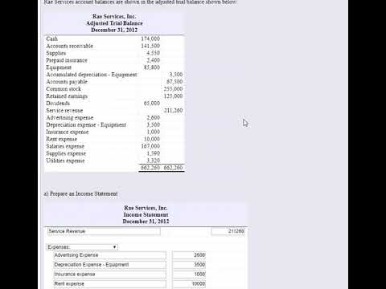
This account is special because it’s a temporary account that QuickBooks uses to hold received payments from invoices before you deposit them in the bank. Imagine this account as the blue bank deposit bag businesses use to hold cash/checks/etc before they deposit them at the bank. It’s crucial to maintain consistency in updating and how to create a cash flow projection clearing undeposited funds to avoid discrepancies and errors in financial reporting, thereby upholding the integrity of the accounting system. By meticulously cross-referencing the deposited amounts with the corresponding invoices and payments, businesses can gain a comprehensive understanding of their financial transactions.
How To Record Deposits In Quickbooks Online
This account can typically be found in your Chart of Accounts or in the Banking section of your QuickBooks Online account. Whether you are new to QuickBooks Online or looking to optimize your bookkeeping workflow, this guide will equip you with the knowledge and tools to effectively manage and clear undeposited funds. That’s why you don’t need to combine transactions or use Undeposited Funds because QuickBooks already has the information from your bank. Regularly reconciling the Undeposited Funds account with the bank statement can help in detecting and rectifying any inconsistencies. It also aids in maintaining an organized and up-to-date accounting system, which is essential for making informed business decisions and meeting regulatory requirements. Ultimately, these adjustments play a critical role in maintaining the financial accuracy and reliability of the organization’s records.
This process facilitates the identification of any discrepancies or outstanding payments, contributing to a more streamlined and transparent financial record. This process enables businesses to reconcile their accounts effectively, providing a clear picture of all pending transactions and their eventual deposit into the bank. It plays a pivotal role in maintaining financial transparency, aiding in the smooth functioning of the clearing process in QuickBooks Online. This process begins with a thorough review of all financial records, including invoices, receipts, and bank statements, to pinpoint any inconsistencies. Once discrepancies are identified, they must be investigated to determine the cause, which can range from human error to issues with electronic transfers. If you’re depositing your checks one at a time, which is often the case for smaller businesses, you have to keep careful track of each and every deposit.
- Now that you have created a new bank deposit form in QuickBooks Online, it’s time to select the payments that you want to include in the deposit.
- When it comes to keeping your finances straight, QuickBooks does a brilliant job of providing simple yet effective tools to see the flow of money in and out of your company.
- It’s crucial to ensure that the deposits are matched with the corresponding invoices and payments, as this will accurately reflect the financial transactions.
- Organize your transactions by grouping them based on common criteria, such as payment dates or customer names.
This oversight can impact the accuracy of financial records and reconciliation. It’s imperative to verify that all payments received are accurately reflected in the system and properly reconciled with corresponding bank deposits. By regularly clearing out undeposited funds, businesses can maintain a clear and reliable trail of their financial transactions, promoting financial accuracy and transparency. This step cements the accuracy and completeness of the reconciliation process. It is important to ensure that all payments received from customers are deposited into the company’s bank account. By comparing undeposited funds to actual bank deposits, discrepancies can be identified, which is crucial for detecting any errors or discrepancies in the financial records.
Undeposited funds in QuickBooks Online refer to payments received by a company that have not yet been deposited into the bank account. This process starts by accessing the undeposited funds account in QuickBooks Online to gather all transactions that should have been deposited into the bank. The most common way to record sales for retail businesses and restaurants with QuickBooks desktop is to use sales receipts and charge a customer who will pay immediately. This method to record sales or donations when you receive a payment right away can be used by any business.
Step 4: Reconcile the Undeposited Funds Account
This proactive approach also enhances the overall accuracy and reliability of financial reports, providing a solid foundation for informed decision-making and financial planning. After recording the bank deposit in QuickBooks Online, it’s important to take the final step of verifying that the undeposited funds have been cleared. This ensures that all the selected payments have been appropriately moved from the undeposited funds account to the bank account, and your what is a trial balance report records are accurate. Now that you have reviewed and finalized the bank deposit details, it’s time to record the deposit in QuickBooks Online. This step ensures that the funds are accurately reflected in your bank account and that your financial records are up to date. Think of undeposited funds as a virtual cash register or a temporary safe where you store your customer payments until you’re ready to deposit them into your physical bank account.
These practices contribute to the integrity of financial records and reconciliation. Ensuring that all funds are correctly allocated plays a critical role in accurate financial reporting and preventing errors down the line. This not only promotes transparency and accountability but also aids in accurate cash flow management and budgeting. Once you are satisfied with the transaction details, save the transaction to record the bank deposit successfully in QuickBooks Online. This completes the process of moving the selected payments closing entries and post from the undeposited funds account to your bank account within your financial records. By understanding the importance of clearing undeposited funds, you can maintain accurate financial records and stay on top of your business’s cash flow.

Mistake 3: Not Reconciling Undeposited Funds Regularly
While recording sales receipts for payments outside of QuickBooks, sales receipt payments are put into the Undeposited Funds account by default. With your deposit slip in hand, you can record a bank deposit and combine the payments in QuickBooks. All payments in the Undeposited Funds account automatically appear in the Bank Deposit window. Put payments into the Undeposited Funds account until you’re ready to combine them.
The Quality Assurance Process: The Roles And Responsibilities
Once the bank deposit is saved, QuickBooks Online will create a new transaction to represent the actual deposit into your bank account. This transaction should reflect the details you entered when creating the bank deposit, such as the date, deposit to account, and amount. Once you are confident that all the information in the bank deposit form is accurate, you can proceed to finalize the deposit. Take a final moment to review the total deposit amount displayed at the bottom of the form, ensuring that it aligns with the total of the selected payments. In addition to the payment details, review any additional fields in the bank deposit form, such as payment methods, reference numbers, or memo notes.
Reconciling accounts allows businesses to gain a clear understanding of their financial status, enabling them to make informed decisions for future financial planning and budgeting. It also aids in maintaining compliance and transparency, contributing to the overall integrity of the financial records. Recording deposits twice in the undeposited funds account is another common mistake that can lead to inaccuracies in financial records and reconciliation. This error may result in overestimation of funds and misalignment with actual bank deposits. Reconciling undeposited funds in QuickBooks Online is crucial for ensuring accuracy in financial records and maintaining a clear trail of transactions from payment receipt to bank deposit. It plays a vital role in maintaining the integrity of financial reconciliation and effective record keeping.
